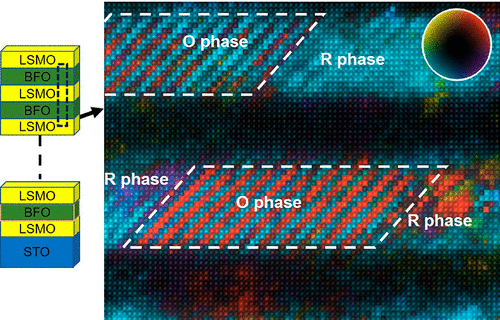Ultrafast & Terahertz Photonics: Publications
Filter by PI:
Filter by topic:
Tunable Photoluminescence from Monolayer Molybdenum Disulfide
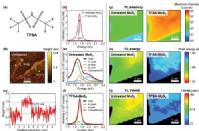
BFM Healy, SL Pain, J. Lloyd-Hughes, NE Grant and JD Murphy
Adv. Mater. Interfaces 11 015002 (Jul 2024)
Quantifying photoluminescence variability in monolayer molybdenum disulfide films grown by chemical vapour deposition
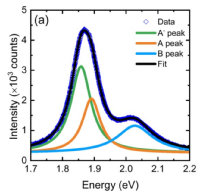
BFM Healy, SL Pain, J. Lloyd-Hughes, NE Grant and JD Murphy
Materials Research Express 11 015002 (Jan 2024)
The 3237 cm−1 diamond defect: Ultrafast vibrational dynamics, concentration calibration, and relationship to the N3VH0 defect

T.J. Keat, D. J. L. Coxon, R.J. Cruddace, V. G. Stavros, M. E. Newton, and J. Lloyd-Hughes
Diamond and Related Materials 141 110661 (Jan 2024)
High-bandwidth perovskite photonic sources on silicon
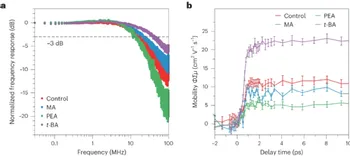
A. Ren, H. Wang, L. Dai, J. Xia, E. Butler-Caddle, J.A. Smith, ... S.A. Hindmarsh, A.M. Sanchez, J. Lloyd-Hughes, S. J Sweeney, ... and Wei Zhang
Nature Photonics 17, 798–805 (July 2023)
Ultrafast THz spectroscopy of carbon nanotube-graphene composites
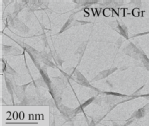
M.G. Burdanova, A.P. Tsapenko, S. Ahmad, E.I. Kauppinen and J. Lloyd-Hughes
Nanotechnology 34 405203 , (June 2023)
Spectroscopic Insights into the Influence of Filling Carbon Nanotubes with Atomic Nanowires for Photophysical and Photochemical Applications
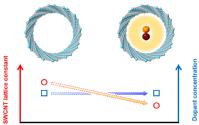
Z. Hu, B. Breeze, M. Walker, E. Faulques, J. Sloan and J. Lloyd-Hughes
ACS Appl. Nano Mater. 6, 2883 (Feb 2023)
Zigzag HgTe Nanowires Modify the Electron–Phonon Interaction in Chirality-Refined Single-Walled Carbon Nanotubes
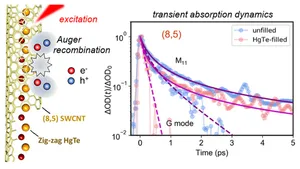
Z. Hu, B. Breeze, R.J. Kashtiban, J. Sloan and J. Lloyd-Hughes
ACS Nano 16 6789 (Apr 2022)
A Review of the Terahertz Conductivity and Photoconductivity of Carbon Nanotubes and Heteronanotubes
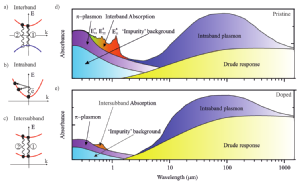
M.G. Burdanova, A.P. Tsapenko, M.V. Kharlamova, E.I. Kauppinen, B.P. Gorshunov, J. Kono and J. Lloyd-Hughes
Advanced Optical Materials 2101042 (Sept 2021)
Intertube Excitonic Coupling in Nanotube Van der Waals Heterostructures
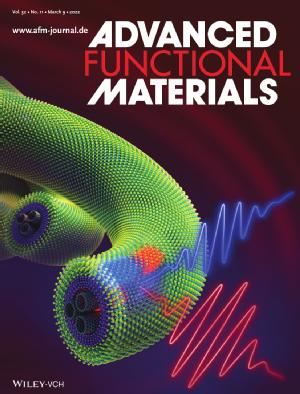
M.G. Burdanova, M. Liu, M. Staniforth, Y. Zheng, R. Xiang, S. Chiashi, A. Anisimov, E. I. Kauppinen, S. Maruyama and J. Lloyd-Hughes
Advanced Functional Materials 2104969 (Sept 2021)
Linear and Helical Cesium Iodide Atomic Chains in Ultranarrow Single-Walled Carbon Nanotubes: Impact on Optical Properties
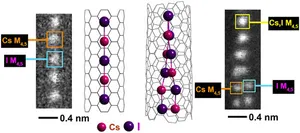
R.J. Kashtiban, M.G. Burdanova, A. Vasylenko, J. Wynn, P.V.C. Medeiros, Q. Ramasse, A.J. Morris, D. Quigley, J. Lloyd-Hughes and J. Sloan
ACS Nano 15 13389 (Aug 2021)
The 2021 ultrafast spectroscopic probes of condensed matter roadmap
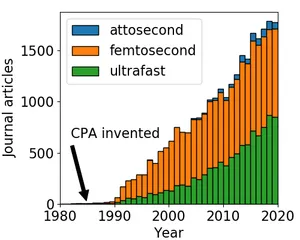
J. Lloyd-Hughes, P.M. Oppeneer, T. Pereira dos Santos, A. Schleife, S. Meng, M.A. Sentef, M. Ruggenthaler, A. Rubio, I. Radu, M. Murnane, X. Shi, H. Kapteyn, B. Stadtmüller, K.M. Dani, F.H. da Jornada, E. Prinz, M. Aeschlimann, R.L. Milot, M. Burdanova, J. Boland, T. Cocker and F. Hegmann
J. Phys.: Cond. Matt. 33 353001 (July 2021)
Layered Perovskites in Solar Cells: Structure, Optoelectronic Properties, and Device Design
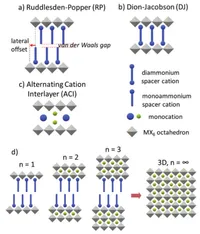
D. Sirbu, F. H. Balogun, R. L. Milot and P. Docampo
Advanced Energy Materials (May 2021)
Ultrafast, high modulation depth terahertz modulators based on carbon nanotube thin films

M.G. Burdanova, G.M. Katybab, R. Kashtiban, G.A. Komandin, E. Butler-Caddle, M. Staniforth, A.A. Mkrtchyan, D.V. Krasnikov, Y.G. Gladush, J.Sloan, A.G. Nasibulin and J. Lloyd-Hughes
Carbon 173 245 (Mar 2021)
Nanotechnology for catalysis and solar energy conversion
U. Banin, N. Waiskopf, L. Hammarström, G. Boschloo, M. Freitag, E.M.J. Johansson, J. Sá, H. Tian, M.B. Johnston, L.M. Herz
An Ultrafast Shakedown Reveals the Energy Landscape, Relaxation Dynamics and Concentration of the N3VH0 Defect in Diamond
 D.J.L. Coxon, M. Staniforth, B.G. Breeze, S.E. Greenough, J.P. Goss, M. Monti, J. Lloyd-Hughes, V.G. Stavros, and M.E. Newton
D.J.L. Coxon, M. Staniforth, B.G. Breeze, S.E. Greenough, J.P. Goss, M. Monti, J. Lloyd-Hughes, V.G. Stavros, and M.E. Newton
J. Phys. Chem. Lett. 11, 6677 (July 2020) [ pdf (with SI) ] [ ref ]
Ultrafast Optoelectronic Processes in 1D Radial van der Waals Heterostructures: Carbon, Boron Nitride, and MoS2 Nanotubes with Coexisting Excitons and Highly Mobile Charges
M.G. Burdanova, R.J. Kashtiban, Y. Zheng, R. Xiang, S. Chiashi, J.M. Woolley, M. Staniforth, E. Sakamoto-Rablah, X. Xie, M. Broome, J. Sloan, A. Anisimov, E.I. Kauppinen, S. Maruyama and J. Lloyd-Hughes
Nano Lett. 20 5, 3560 (Apr 2020) [ free e-print ] [ preprint pdf ] [ ref ]
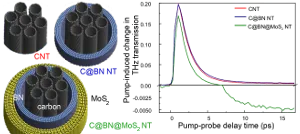 Heterostructures built from 2D, atomically thin crystals are bound by the van der Waals force and exhibit unique optoelectronic properties. Here, we report the structure, composition and optoelectronic properties of 1D van der Waals heterostructures comprising carbon nanotubes wrapped by atomically thin nanotubes of boron nitride and molybdenum disulfide (MoS2). The high quality of the composite was directly made evident on the atomic scale by transmission electron microscopy, and on the macroscopic scale by a study of the heterostructure’s equilibrium and ultrafast optoelectronics. Ultrafast pump–probe spectroscopy across the visible and terahertz frequency ranges identified that, in the MoS2 nanotubes, excitons coexisted with a prominent population of free charges. The electron mobility was comparable to that found in high-quality atomically thin crystals. The high mobility of the MoS2 nanotubes highlights the potential of 1D van der Waals heterostructures for nanoscale optoelectronic devices.
Heterostructures built from 2D, atomically thin crystals are bound by the van der Waals force and exhibit unique optoelectronic properties. Here, we report the structure, composition and optoelectronic properties of 1D van der Waals heterostructures comprising carbon nanotubes wrapped by atomically thin nanotubes of boron nitride and molybdenum disulfide (MoS2). The high quality of the composite was directly made evident on the atomic scale by transmission electron microscopy, and on the macroscopic scale by a study of the heterostructure’s equilibrium and ultrafast optoelectronics. Ultrafast pump–probe spectroscopy across the visible and terahertz frequency ranges identified that, in the MoS2 nanotubes, excitons coexisted with a prominent population of free charges. The electron mobility was comparable to that found in high-quality atomically thin crystals. The high mobility of the MoS2 nanotubes highlights the potential of 1D van der Waals heterostructures for nanoscale optoelectronic devices.
Landau polaritons in highly nonparabolic two-dimensional gases in the ultrastrong coupling regime
J. Keller, G. Scalari, F. Appugliese, S. Rajabali, M. Beck, J. Haase, C.A. Lehner, W. Wegscheider, M. Failla, M. Myronov, D.R. Leadley, J. Lloyd-Hughes, P. Nataf, and J. Faist
Physical Review B 101:075301 (Feb 2020) [ pdf ][ ref ]
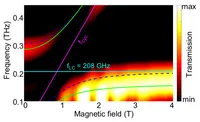 We probe ultrastrong light-matter coupling between metallic terahertz metasurfaces and Landau-level transitions in high-mobility two-dimensional electron and hole gases. We utilize heavy-hole cyclotron resonances in strained Ge and electron cyclotron resonances in InSb quantum wells, both within highly nonparabolic bands, and compare our results to well-known parabolic AlGaAs/GaAs quantum well systems. Tuning the coupling strength of the system by two methods, lithographically and by optical pumping, we observe a behavior clearly deviating from the standard Hopfield model previously verified in cavity quantum electrodynamics: an opening of a lower polaritonic gap.
We probe ultrastrong light-matter coupling between metallic terahertz metasurfaces and Landau-level transitions in high-mobility two-dimensional electron and hole gases. We utilize heavy-hole cyclotron resonances in strained Ge and electron cyclotron resonances in InSb quantum wells, both within highly nonparabolic bands, and compare our results to well-known parabolic AlGaAs/GaAs quantum well systems. Tuning the coupling strength of the system by two methods, lithographically and by optical pumping, we observe a behavior clearly deviating from the standard Hopfield model previously verified in cavity quantum electrodynamics: an opening of a lower polaritonic gap.
Ionic liquid gated carbon nanotube saturable absorber for switchable pulse generation
Y. Gladush, A. Mkrtchyan, D. Kopylova, A. Ivanenko, B. Nyushkov, S. Kobtsev, A. Kokhanovskiy, A. Khegai, M. Melkumov, M.G. Burdanova, M. Staniforth, J. Lloyd-Hughes and A.G. Nasibulin
Nano Letters 19 5836 (Aug 2019) [ pdf ] [ ref ]
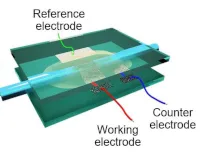 Materials with electrically tunable optical properties offer a wide range of opportunities for photonic applications. The optical properties of the single-walled carbon nanotubes (SWCNTs) can be significantly altered in the near infrared region by means of electrochemical doping. The states’ filling, which is responsible for the optical absorption suppression under doping, also alters the nonlinear optical response of the material. Here, for the first time, we report that the electrochemical doping can tailor the nonlinear optical absorption of SWCNT films and demonstrate its application to control pulsed fiber laser generation. With a pump-probe technique we show that under an applied voltage below 2 V the photo-bleaching of the material can be gradually reduced and even turned to photo-induced absorption. Furthermore, we integrated a carbon nanotube electrochemical cell on a side-polished fiber to tune the absorption saturation and implemented it into the fully polarization-maintaining fiber laser. We show that the pulse generation regime can be reversibly switched between femtosecond mode locking and microsecond Q-switching using different gate voltages. This approach paves the road towards carbon nanotube optical devices with tunable nonlinearity.
Materials with electrically tunable optical properties offer a wide range of opportunities for photonic applications. The optical properties of the single-walled carbon nanotubes (SWCNTs) can be significantly altered in the near infrared region by means of electrochemical doping. The states’ filling, which is responsible for the optical absorption suppression under doping, also alters the nonlinear optical response of the material. Here, for the first time, we report that the electrochemical doping can tailor the nonlinear optical absorption of SWCNT films and demonstrate its application to control pulsed fiber laser generation. With a pump-probe technique we show that under an applied voltage below 2 V the photo-bleaching of the material can be gradually reduced and even turned to photo-induced absorption. Furthermore, we integrated a carbon nanotube electrochemical cell on a side-polished fiber to tune the absorption saturation and implemented it into the fully polarization-maintaining fiber laser. We show that the pulse generation regime can be reversibly switched between femtosecond mode locking and microsecond Q-switching using different gate voltages. This approach paves the road towards carbon nanotube optical devices with tunable nonlinearity.
Giant negative terahertz photoconductivity in controllably doped carbon nanotube networks
M.G. Burdanova, A.P. Tsapenko, D.A. Satco, R.J. Kashtiban, C.D.W. Mosley, M. Monti, M. Staniforth, J. Sloan, Y. Gladush, A.G. Nasibulin and J. Lloyd-Hughes
ACS Photonics 6 1058 (Mar 2019) [ preprint pdf ] [ supplemental info ] [ ref ]
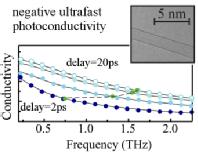 A strong negative photoconductivity was identified in thin film networks of single-walled carbon nanotubes using optical pump, THz probe spectroscopy. The films were controllably doped, using either adsorption doping with different p-type dopant concentrations, or ambipolar doping using an ionic gate. While doping enhanced the THz conductivity and increased the momentum scattering rate, interband photoexcitation lowered the spectral weight and reduced the momentum scattering rate. This negative THz photoconductivity was observed for all doping levels, regardless of the chemical potential, and decayed within a few picoseconds. The strong many-body interactions inherent to these 1D conductors led to trion formation under photoexcitation, lowering the overall conductivity of the carbon nanotube network. The large amplitude of negative THz photoconductivity and the tunability of its recovery time with doping offer promise for spectrally wide-band ultrafast devices including THz detectors, polarizers and modulators.
A strong negative photoconductivity was identified in thin film networks of single-walled carbon nanotubes using optical pump, THz probe spectroscopy. The films were controllably doped, using either adsorption doping with different p-type dopant concentrations, or ambipolar doping using an ionic gate. While doping enhanced the THz conductivity and increased the momentum scattering rate, interband photoexcitation lowered the spectral weight and reduced the momentum scattering rate. This negative THz photoconductivity was observed for all doping levels, regardless of the chemical potential, and decayed within a few picoseconds. The strong many-body interactions inherent to these 1D conductors led to trion formation under photoexcitation, lowering the overall conductivity of the carbon nanotube network. The large amplitude of negative THz photoconductivity and the tunability of its recovery time with doping offer promise for spectrally wide-band ultrafast devices including THz detectors, polarizers and modulators.
Graphene controlled Brewster angle device for ultra broadband terahertz modulation
Z. Chen, X. Chen, L. Tao, K. Chen, M. Long, K. Yan, R.I. Stantchev, E. Pickwell-MacPherson & J.-B. Xu
Nature Communications 9 4909 (November 2018) [ pdf ] [ ref ]
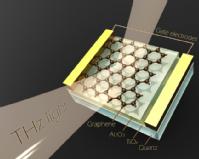
Terahertz modulators with high tunability of both intensity and phase are essential for effective control of electromagnetic properties. Due to the underlying physics behind existing approaches there is still a lack of broadband devices able to achieve deep modulation. Here, we demonstrate the effect of tunable Brewster angle controlled by graphene, and develop a highly-tunable solid-state graphene/quartz modulator based on this mechanism. The Brewster angle of the device can be tuned by varying the conductivity of the graphene through an electrical gate. In this way, we achieve near perfect intensity modulation with spectrally flat modulation depth of 99.3 to 99.9 percent and phase tunability of up to 140 degree in the frequency range from 0.5 to 1.6 THz. Different from using electromagnetic resonance effects (for example, metamaterials), this principle ensures that our device can operate in ultra-broadband. Thus it is an effective principle for terahertz modulation.
Conduction properties of thin films from a water soluble carbon nanotube/hemicellulose complex
D. Shao, P. Yotprayoonsak, V. Saunajoki, M. Ahlskog, J. Virtanen, V. Kangas, A. Volodin, C. Van Haesendonck, M. Burdanova, C. D. W. Mosley and J. Lloyd-Hughes
Nanotechnology 29 145203 (Feb 2018) [ pdf ] [ ref ]
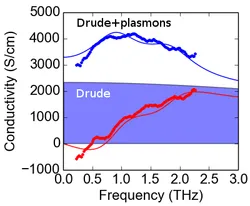 We have examined the conductive properties of a carbon nanotube (CNT) based thin film, which were prepared via dispersion in water by non-covalent functionalization of the nanotubes with xylan, a type of hemicellulose. Measurements of low temperature conductivity, Kelvin Probe Force Microscopy, and high frequency (THz) conductivity elucidated the intra-tube and inter-tube charge transport processes in this material. The measurements show excellent conductive properties of the as prepared thin films, with bulk conductivity up to 2000 S/cm. The transport results demonstrate that the hemicellulose does not seriously interfere with the inter-tube conductance.
We have examined the conductive properties of a carbon nanotube (CNT) based thin film, which were prepared via dispersion in water by non-covalent functionalization of the nanotubes with xylan, a type of hemicellulose. Measurements of low temperature conductivity, Kelvin Probe Force Microscopy, and high frequency (THz) conductivity elucidated the intra-tube and inter-tube charge transport processes in this material. The measurements show excellent conductive properties of the as prepared thin films, with bulk conductivity up to 2000 S/cm. The transport results demonstrate that the hemicellulose does not seriously interfere with the inter-tube conductance.
Papers from 2016 (JLH only)
- Terahertz quantum Hall effect for spin-split heavy-hole gases in strained Ge quantum wellsLink opens in a new window
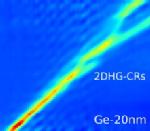
M. Failla, J. Keller, G. Scalari, C. Maissen, J. Faist, C. Reichl, W. Wegscheider, O. J. Newell, D. R. Leadley, M. Myronov, J. Lloyd-Hughes
New J. Phys. 18:113036 (Nov 2016) [ pdfLink opens in a new window ][ ref ]
Spin-split heavy-hole gases in strained germanium quantum wells were characterized by polarisation-resolved terahertz time-domain spectroscopy. Effective masses, carrier densities, g-factors, transport lifetimes, mobilities and Rashba spin-splitting energies were evaluated, giving quantitative insights into the influence of strain. The Rashba coefficient was found to lower for samples with higher biaxial compressive strain, while heavy-hole mobilities were enhanced to over 1.5x106cm2V−1s−1 at 3 K. This high mobility enabled the observation of the optical quantum Hall effect at terahertz frequencies for spin-split two-dimensional heavy-holes, evidenced as plateaux in the transverse magnetoconductivity at even and odd filling factors.

